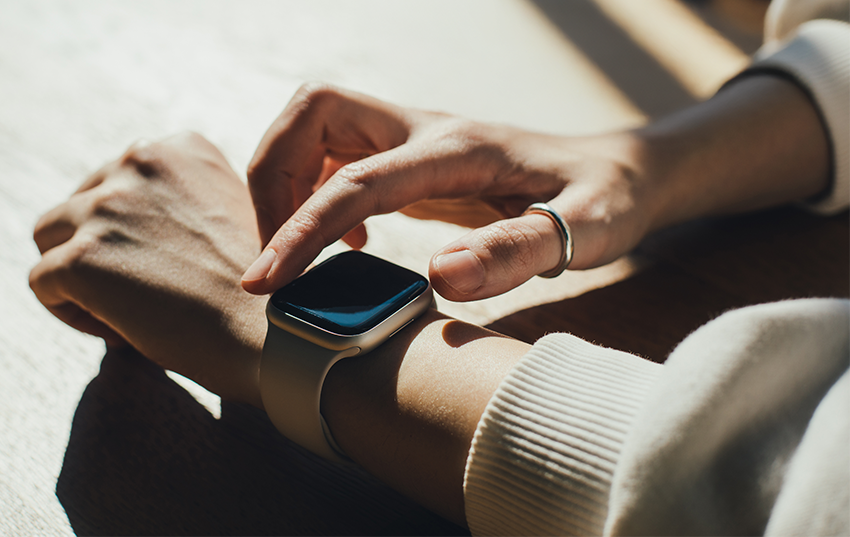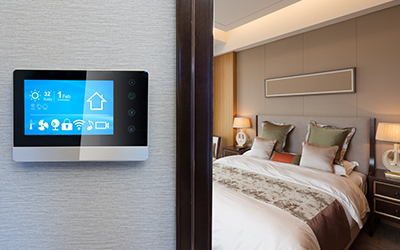
Source: polinaloves/Technology/Adobe Stock.
Usage of wearable technology continues to grow year-over-year. Like many technology categories, these devices satisfy use cases that consumers were already looking to fill while also introducing consumers to new use cases that they didn’t know they wanted.
Originally, it was the evolution of fitness trackers and smartwatches that both addressed and enhanced user experiences. Currently, a similar trajectory is likely developing with smart earbuds and smart earphones. Additionally, usage of augmented/virtual reality (AR/VR) headsets are showing an increase compared to 2024, which aligns well with a recent S&P Global Market Intelligence 451 Research survey that found consumers are engaging with virtual worlds at a higher rate.
This blog post presents findings from a survey conducted by S&P Global Market Intelligence 451 Research, which asked US consumers about their device ownership and planned buying.
Key takeaways from the survey
Are smart earbuds/headphones poised to take over the hearing aid market? Hearing aids have been around for a long time but have never been particularly “smart” devices until recently. Among respondents who use hearing assistance devices, 78% have traditional hearing aids, 22% have over-the-counter (OTC) hearing aids, 14% have NuHeara IQBuds2Max and 5% have Apple AirPods Pro 2 headphones. On face value, it looks like smart devices make up only about 19% of the market, but there are other smart hearing device brands that operate within the traditional and OTC hearing aid categories. While it’s hard to say exactly how much of the market that smart earbuds/headphones could ultimately encompass, our data continually shows examples of consumers preferring multifunctional devices to meet their needs. This would line up similarly to the adoption paths of fitness trackers and smartwatches.
Hearing aid satisfaction levels leave room for improvement. Like other areas of emerging consumer tech, “smart” hearing assistance devices have an opportunity to displace legacy single-function devices.
While the current options on the market do get the job done, traditional hearing aids (57% very satisfied) and OTC hearing aids (44%) are mostly middle of the road in terms of customer satisfaction. Even devices like the NuHeara IQBuds2Max (49%) and Apple AirPods Pro 2 headphones (57%) show promise but have a way to go to reach the more vaunted satisfaction levels of other consumer tech devices.
The truth is that, based on current satisfaction levels, many health-related “smart” or wearable device categories are primed for a new generation of devices to better meet consumers’ needs.
Virtual reality on the rise. Use of augmented/virtual reality devices (AR/VR) is up noticeably year-over-year. While the debut of the Apple Vision Pro (23%) hasn’t necessarily been the sole driver of this growth, it is up 9 points compared to the third-quarter 2024 survey, also conducted by S&P Global Market Intelligence 451 Research. Meta/Oculus (32%) is still the most used brand, although it is down 7 points compared to 2024. Samsung (14%; up 3 points) and Sony (13%; down 2 points) are the only other brands in double digits. While the uptake of Apple’s AR/VR headset in its first year is notable, its high price point will likely continue to be a limiting factor for broader adoption.
For example, higher-income households (more than $100,000 per year; 32%) are more than twice as likely to own a Vision Pro compared to lower-income ones (less than $50,000 per year; 14%). Apple is the only AR/VR manufacturer where such an imbalance exists.
Apple leads in satisfaction. A big reason for Apple’s early success is its ability to deliver a product that satisfies customer expectations, with 69% of owners saying they are very satisfied with their Apple Vision Pro AR/VR headset. This satisfaction rating tops Meta/Oculus (64%), Sony (60%) and Samsung (58%). Additionally, respondents say Apple also provides the best customer support experience for their AR/VR devices compared to other manufacturers.
Generation Z and millennials lead the way. An important consideration in the positive outlook for the future uptake of these technologies is the higher level of usage among millennials and Generation Z coupled with the expectation that strong usage will continue among Generation Alpha. Currently, millennials and Gen Z are the top users of smart ear buds, smart headphones and AR/VR headsets. Coupled with the fact they are also the largest users of virtual worlds, it’s easy to see how they are likely to become even more immersed in these technologies as they continue to mature.
Want insights on consumer technology trends delivered to your inbox? Join the 451 Alliance.

